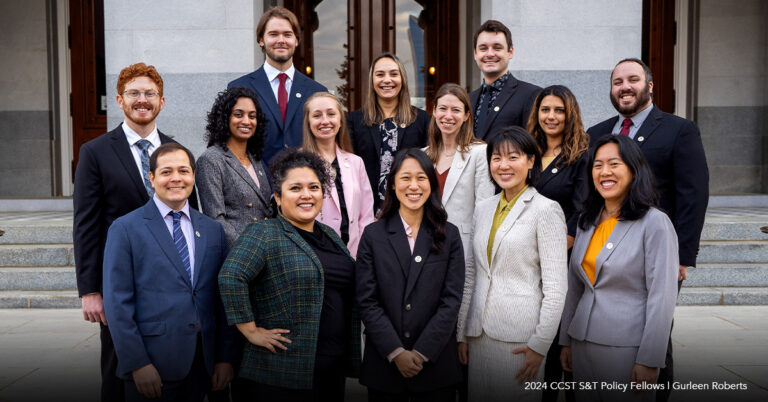Update: Applications for the CCST Science & Technology Policy Fellowship Have Closed
NAE Identifies Engineering Challenges for 21st Century
February 25, 2008 | CCST Newsroom | Contact: M. Daniel DeCillis

The National Academy of Engineering (NAE) has identified fourteen priority areas awaiting engineering solutions in the 21st century. The list of “Grand Challenges for Engineering” was selected by a group of 18 experts from academia and private industry. The committee was chaired by former Defense Secretary William Perry, currently an engineering professor at Stanford University.
The challenges fall into four general categories: promoting sustainable technologies, advancing human health, reducing vulnerability to threats and increasing the joy of living. They include:
- Making solar energy affordable
- Providing energy from fusion
- Developing carbon sequestration methods
- Managing the nitrogen cycle (countering the effects of fertilizer use, internal combustion, etc.)
- Providing access to clean water
- Restoring and improving urban infrastructure
- Advancing health informatics
- Engineering better medicines
- Reverse-engineering the brain
- Preventing nuclear terror
- Securing cyberspace
- Enhancing virtual reality
- Advancing personalized learning
- Engineering the tools for scientific discovery
“California’s scientific community is arguably at the forefront of most if not all of these issues, which concern serious challenges to our citizens’ standard of living in the future,” said CCST Board Member Lawrence Papay, a member of the NAE. “In fact, we are working with the National Academies in several of these areas.”
The challenges are intended both as a set of organizing principles for the NAE’s own programs and as a means of drawing the attention of policymakers to these critical issues.
“Meeting some of these is simply imperative for our survival on this planet,” said NAE President Charles Vest. “Some will make us more secure against both human and natural threats. And all will improve the quality of life in our nation and the world.”
While these challenges represent national areas of priority, they are valuable guidelines for state-level policymakers as well.
“CCST has identified many of these same areas (energy, water, environment, health and infrastructure) as critical for California,” said Papay. “It is imperative that the state continues to support a research and development environment where researchers both in academia and the private sector can develop appropriate responses to these issues.”






